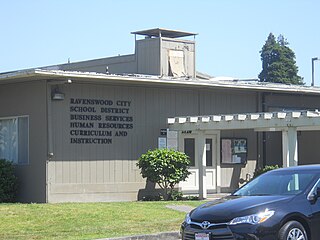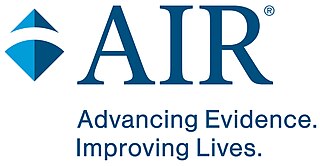Survey methodology is "the study of survey methods". As a field of applied statistics concentrating on human-research surveys, survey methodology studies the sampling of individual units from a population and associated techniques of survey data collection, such as questionnaire construction and methods for improving the number and accuracy of responses to surveys. Survey methodology targets instruments or procedures that ask one or more questions that may or may not be answered.
Intellectual giftedness is an intellectual ability significantly higher than average. It is a characteristic of children, variously defined, that motivates differences in school programming. It is thought to persist as a trait into adult life, with various consequences studied in longitudinal studies of giftedness over the last century. These consequences sometimes includes stigmatizing and social exclusion. There is no generally agreed definition of giftedness for either children or adults, but most school placement decisions and most longitudinal studies over the course of individual lives have followed people with IQs in the top 2.5 percent of the population—that is, IQs above 130. Definitions of giftedness also vary across cultures.
The Doctor of Education is a research or professional doctoral degree that focuses on the field of education. It prepares the holder for academic, research, administrative, clinical, or professional positions in educational, civil, private organizations, or public institutions. Considerable differences exist in structure, content and aims between regions.
Gifted education is a sort of education used for children who have been identified as gifted and talented.
The Monitoring the Future (MTF) study, also known as the National High School Senior Survey, is a long-term epidemiological study that surveys trends in legal and illicit drug use among American adolescents and adults as well as personal levels of perceived risk and disapproval for each drug. The survey is conducted by researchers at the University of Michigan's Institute for Social Research, funded by research grants from the National Institute on Drug Abuse, one of the National Institutes of Health.
A longitudinal study is a research design that involves repeated observations of the same variables over long periods of time. It is often a type of observational study, although it can also be structured as longitudinal randomized experiment.

Lewis Madison Terman was an American psychologist, academic, and proponent of eugenics. He was noted as a pioneer in educational psychology in the early 20th century at the Stanford School of Education. Terman is best known for his revision of the Stanford–Binet Intelligence Scales and for initiating the longitudinal study of children with high IQs called the Genetic Studies of Genius. As a prominent eugenicist, he was a member of the Human Betterment Foundation, the American Eugenics Society, and the Eugenics Research Association. He also served as president of the American Psychological Association. A Review of General Psychology survey, published in 2002, ranked Terman as the 72nd most cited psychologist of the 20th century, in a tie with G. Stanley Hall.
The National Center for Education Statistics (NCES) is the part of the United States Department of Education's Institute of Education Sciences (IES) that collects, analyzes, and publishes statistics on education and public school district finance information in the United States. It also conducts international comparisons of education statistics and provides leadership in developing and promoting the use of standardized terminology and definitions for the collection of those statistics. NCES is a principal agency of the U.S. Federal Statistical System.
Julian Cecil Stanley was an American psychologist. He was an advocate of accelerated education for academically gifted children. He founded the Johns Hopkins University Center for Talented Youth (CTY), as well as a related research project, the Study of Mathematically Precocious Youth (SMPY), whose work has, since 1980, been supplemented by the Julian C. Stanley Study of Exceptional Talent (SET), which provides academic assistance to gifted children. Stanley was also widely known for his classic book, coauthored with Donald Campbell, on the design of educational and psychological research - Experimental and Quasi-experimental Designs for Research.
The National Longitudinal Surveys (NLS) are a set of surveys sponsored by the Bureau of Labor Statistics (BLS) of the U.S. Department of Labor. These surveys have gathered information at multiple points in time on the labor market experiences and other significant life events of several groups of men and women. Each of the NLS samples consists of several thousand individuals, many of whom have been surveyed over several decades.

Research design refers to the overall strategy utilized to answer research questions. A research design typically outlines the theories and models underlying a project; the research question(s) of a project; a strategy for gathering data and information; and a strategy for producing answers from the data. A strong research design yields valid answers to research questions while weak designs yield unreliable, imprecise or irrelevant answers.
Center for Talent Development (CTD), established in 1982, is a direct service and research center in the field of gifted education and talent development based at Northwestern University.

The Ravenswood City School District is a public school district headquartered in East Palo Alto, California, US. The district, in the San Francisco Bay Area, serves the communities of East Palo Alto and eastern Menlo Park. Students from this school district who continue on with public schooling matriculate to the Sequoia Union High School District.
John Barry Willett is an emeritus professor at Harvard University Graduate School of Education and a member of the National Academy of Education who specialized in the teaching, development and application of innovative quantitative methods in the social sciences.
John Clemans Flanagan, was a noted psychologist most known for developing the critical incident technique, which identifies and classifies behaviors associated with the success or failure of human activity. He was a pioneer of aviation psychology. During World War II Flanagan was commissioned by the U.S. Army Air Forces in 1941 to head an aviation psychology program that developed tests to help identify pilots suitable for combat missions.
Professor Wei-Jun Jean Yeung is a Taiwanese sociologist and demographer, now is the professor of Asia Research Institute, National University of Singapore. She chairs the Family, Children, and Youth Research Cluster in the Faculty of Arts and Social Sciences in NUS.
The Future of Families and Child Wellbeing Study (FFCWS) is a longitudinal birth cohort study of American families. Formerly known as the Fragile Families and Child Wellbeing Study, the study’s name was changed in January 2023.

The American Institutes for Research (AIR) is a nonprofit, nonpartisan behavioral and social science research, evaluation and technical assistance organization based in Arlington, Virginia. One of the world's largest social science research organizations, AIR has more than 1,800 staff in locations across the United States and abroad.

High School and Beyond (HS&B) is a longitudinal study of a nationally representative sample of people who were high school sophomores and seniors in 1980. The study was originally funded by the United States Department of Education’s National Center for Education Statistics (NCES) as a part of their Secondary Longitudinal Studies Program. NORC at the University of Chicago, then known as the National Opinion Research Center, developed the sample design and performed the data collection for the study. The study surveyed students from over 1,000 public and private high schools on their cognitive and non-cognitive skills, high school experiences, work experiences, and future plans. Baseline surveys were administered in 1980, with follow-up surveys in 1982, 1984, 1986, 1992 (sophomores), 2014 (sophomores), and 2015 (seniors).
The GESIS – Leibniz Institute for the Social Sciences is the largest German infrastructure institute for the social sciences. It is headquartered in Mannheim, with a location in Cologne. With basic research-based services and consulting covering all levels of the scientific process, GESIS supports researchers in the social sciences. As of 2017, the president of GESIS is Christof Wolf.





